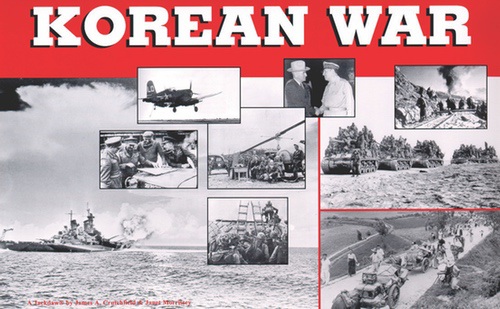
Korean War
On June 25, 1950, a large North Korean army, heavily armed with the latest Soviet-designed weapons and backed by communist China, crossed the 38th Parallel and invaded South Korea. The United Nations, supported by the United States, took immediate action and dispatched troops to Korea, mostly Americans under the command of General Douglas MacArthur. For three long years, the fighting continued, back and forth across the rugged terrain of the Korean Peninsula. When an armistice was finally declared in July 1953, the dividing line between the two Koreas remained at the 38th Parallel, and over 150,000 Americans had become casualties in this, America's first undeclared war. Using a wide variety of primary source documents, including maps, government intelligence reports and communiques, newspaper articles, propaganda leaflets, political cartoons, and photographs, this primary source portfolio dramatically depicts the violent events and turbulent politics of the Korean War years. This portfolio includes a Study Guide with reproducible student activities and a timeline of critical events with a who's who list. 5 Illustrated Broadsheet Essays: * The Iron Curtain Falls * The Struggle for Supremacy * A Clash of Personalities, President Truman vs. General MacArthur * A Negotiated Peace * Effects of the Korean War 16 Primary Source Documents: * State Department telegram to President Truman, June 24, 1950 * President Truman's statement on Korea, June 27, 1950 * United Nations Security Council resolution, June 27, 1950 * Political cartoon, August 16, 1950 * General MacArthur's appeal to end the war, October 1, 1950 * U.S. Army intelligence report, August 27, 1950 * Translation of a Chinese intelligence report, March 8, 1951 * Front page of the New York World Telegram and The Sun, April 11, 1951 * U.S. and Chinese propaganda leaflets * Photo-poster: The War in Korea * Photograph of North Korean and Communist Chinese POWs * Eisenhower election campaign handout, 1952 * Restricted memorandum reporting results of public opinion polls on the Korean conflict, 1953 * Civil Defense advertisement, early 1950s * Fallout shelter plans * U.S. Department of Defense news release concerning economic and security threats to the Korean Peninsula, January 1998








